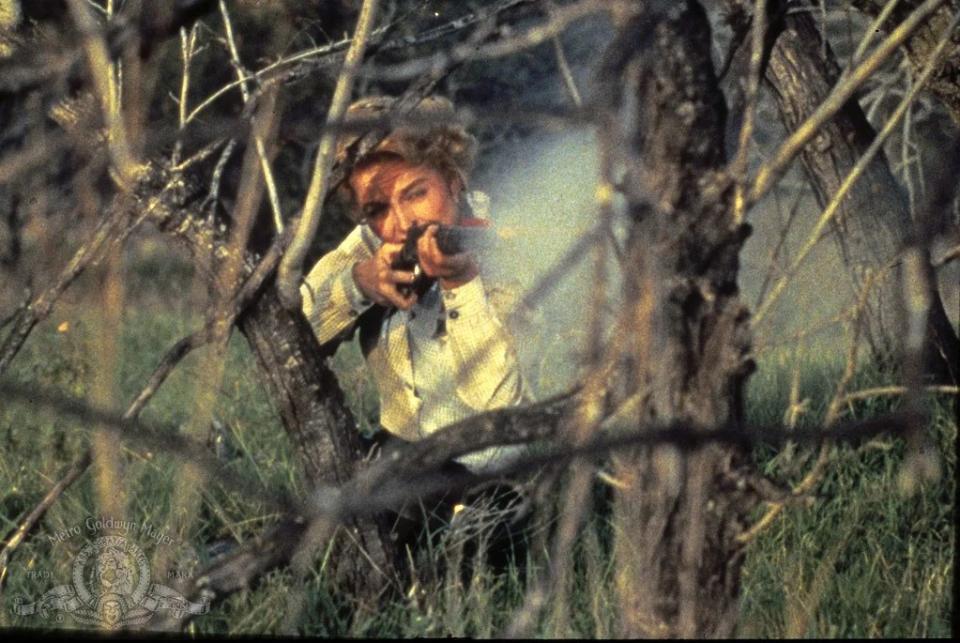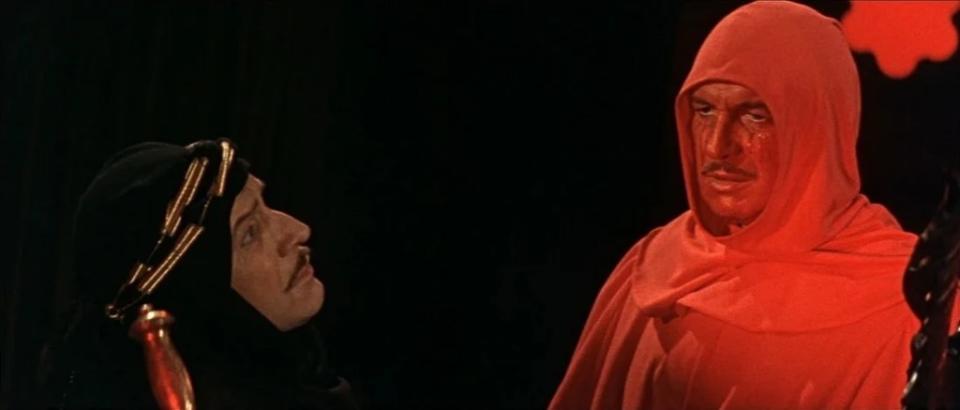Roger Corman Was More Than a Great Producer – He Was an Important Director | Commentary
- Oops!Something went wrong.Please try again later.
- Oops!Something went wrong.Please try again later.
- Oops!Something went wrong.Please try again later.
The late and exceedingly great Roger Corman died on Thursday at the age of 98. In his lifetime he produced hundreds of movies, and in the process launched the careers of many of our most beloved filmmakers. Martin Scorsese (“Boxcar Bertha”), Francis Ford Coppola (“Dementia 13”), Peter Bogdanovich (“Targets”), Jonathan Demme (“Caged Heat”), and many, many more had their early breaks at Corman’s production companies. He also distributed classic films by Ingmar Bergman, Federico Fellini and Akira Kurosawa when he wasn’t producing independent genre flicks that would make bizarre double features with those dignified art house award-winners.
Roger Corman has always received credit for shepherding a lot of great directors, and for good reason. But there’s one director who rarely turns up on the list of iconic Roger Corman filmmakers … and that’s Corman himself.
It’s strange that Corman’s directing career could get so overshadowed, but not entirely surprising. Although he sat right behind the camera for 56 films (sometimes uncredited), he hadn’t made a film of his own since 1990’s “Frankenstein Unbound,” starring John Hurt, Raul Julia and Michael Hutchence from INXS. In the nearly 35 years since, Corman produced as many films as ever — which is to say, a mind-boggling amount — and he made many public appearances to promote those projects. To multiple generations of movie lovers he was a B-movie producer and a lovable spokesman.
And yet for almost 20 years, Corman was one of the most prolific directors working in show business. His career kicked off in 1955 with the western “Five Guns West.” And also the western “Apache Woman.” And also the post-apocalyptic “Day the World Ended.” And also some of the monster flick “The Beast With a Million Eyes.” It was his first year behind the camera and Roger Corman had already cemented his signature style: He worked cheap, he worked fast, he worked in whatever genre made money, and if the movie was good then all the better.
Many of Corman’s early, inexpensive, populist films became fodder, decades later, for ironic appreciation. You’ll find episodes of “Mystery Science Theater 3000” dedicated to merciless riffs on Corman’s “Swamp Diamonds,” “Gunslinger,” “It Conquered the World,” “Teenage Cave Man” and the melodramatically-titled “The Saga of the Viking Women and Their Voyage to the Waters of the Great Sea Serpent.” And they’re all very funny, but if that’s all you knew of Roger Corman’s career, and if you weren’t paying attention to the movies playing behind the silhouettes of Joel Hodgson and his lovable ‘bots, you might think that Corman exclusively made stinkers.

But setting his (obviously low) budgets aside, Corman’s early run-and-gun directing approach — with an emphasis on genre films, catering to a burgeoning post-war teen drive-in audience — gave him a lot of freedom. A handful of exploitation elements could bring in the bucks, and in the process he often snuck in thoughtful, in your face commentary.
“Teenage Cave Man,” starring a 26-year-old Robert Vaughn (who looked 35), tells the story of a caveman who questions the oppressive conservative social structures of his elders, venturing forth into forbidden territory to find monsters and, in a shocking reveal, evidence that the film takes place in the distant future, after the nuclear holocaust. It’s a story that would have made for a classic “Twilight Zone” episode, writ just a little larger, and with goofier beasts.
Many of Corman’s earliest films starred the luminous Beverly Garland, whose commanding performances elevated even his clunkiest material. She should have been a bigger star, but Corman gave her a chance to truly shine. Their feminist western “Gunslinger” stars Garland as a sheriff’s wife who picks up the badge when her husband is murdered and wages war against a corrupt saloon owner, played by Allison Hayes. The town is controlled by two women, populated by ineffectual men, and visited by a vengeful Civil War vet who gets enmeshed in a love triangle between the hero and villain, each of whom are pursuing careers often denied to women in the old west. And in Hollywood.
It was earnest, progressive, angry filmmaking, not unlike his monster classic “The Wasp Woman,” starring the also-great Susan Cabot as a model turned cosmetics tycoon. Her need to stay relevant in a youth-driven economy — in an industry dominated by condescending male underlings who don’t respect her — leads her to become, as one might imagine, a “wasp woman.” It’s a classic tale of hubris and horror, not unlike the iconic Universal Monster movies and better than at least a few of them (the original “Mummy” sequels, if nothing else).
The thing about cranking out a lot of movies in rapid succession is that you get better at it, and you get better quickly. By the time the 1960s rolled around, Corman had hit his stride. His first Edgar Allan Poe adaptation, “House of Usher,” was such a hit that it launched a loosely-connected franchise. Corman and Vincent Price made eight Edgar Allan Poe movies together, although the 1963 shocker “The Haunted Palace” was an adaptation in name only, instead stealing the plot from H.P. Lovecraft’s “The Case of Charles Dexter Ward” and hoping nobody would notice.
Not all the Corman/Price movies were created equal, but most are magical. “The Haunted Palace” is a gloriously gothic and demented tale of multigenerational terror, regardless of its misleading literary origins. “The Pit and the Pendulum” is a wonderfully ghoulish adaptation, evoking the grimmest and sleaziest E.C. horror comics of the 1950s. The image of Price operating the title death machine is emblazoned into the brains of every Poe fan, every Corman fan, and every Price fan (and that gamut should just about cover us all).

Everyone has their favorites (and more people should list the underrated “Tomb of Ligeia” amongst them) but the greatest film in Corman’s Poe cycle is almost certainly “The Masque of the Red Death.” Price prays Prospero, a slithery hedonist who has walled the rich and unscrupulous safely away while a deadly plague ravages the country. They get their just desserts in the end. The tale is as relevant as ever, Price was rarely better, and the cinematography by Nicholas Roeg — who would later direct classic films like “Don’t Look Now” and “The Man Who Fell to Earth” — is so astoundingly colorful it pierces your eyeballs and threatens to permanently stain the screen.
Corman didn’t always hide his social commentary behind audience-friendly tales of sex and violence. Sometimes he went for the throat. He cast William Shatner in “The Intruder” as a despicable schemer who incites a small town into a horrifying racist fury in response to school integration. As the times changed and the 1960s raged on, Corman directed several counterculture freakout films like “The Trip,” written by Jack Nicholson and starring Peter Fonda as a man who drops acid for the first time, setting him on a strange path of self-discovery. All the more bizarre is “Gas! -Or- It Became Necessary to Destroy the World in Order to Save It.”, a nebulously constructed but fascinating sci-fi comedy in which a deadly gas kills everyone over the age of 25, and the rebellious youths struggle to build a future without making the old mistakes, rejecting while also fetishizing society’s past.
The vast directorial career of Roger Corman can best be characterized by its lack of characterization. Corman flew wherever the popular culture’s wind seemed to take him, making westerns when they were popular, monster movies when they packed the house, politically charged movies for young audiences while they were mobilizing, and classic tales of terror and criminality in between. His films made money, and they had an audience, and they challenged what could normally be considered “good” cinema.
Although Roger Corman could steer a classy production when the occasion arose, his was a rockier road, with tight schedules and tighter purse strings, making art for the masses. Sometimes even great art. And sometimes just good, old-fashioned, American schlock.
The post Roger Corman Was More Than a Great Producer – He Was an Important Director | Commentary appeared first on TheWrap.

